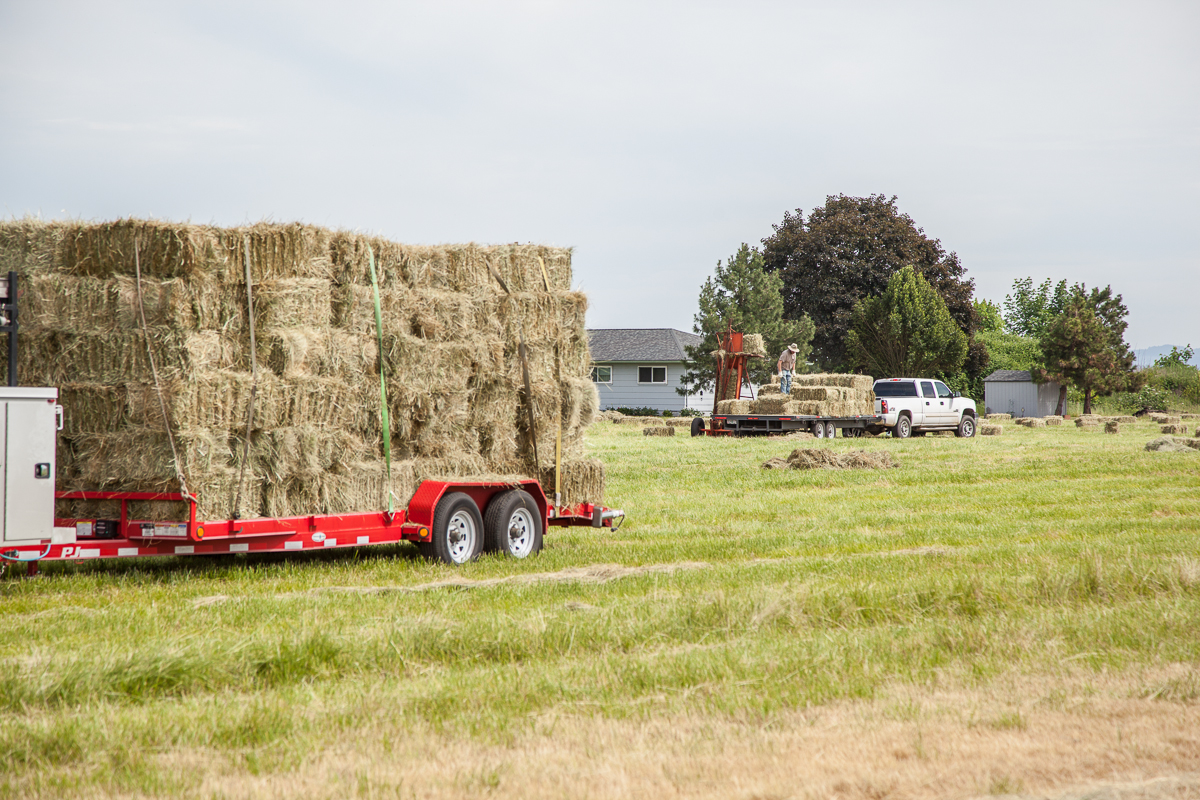Coastal 101: Stacking Hay with Isaiah
June 28, 2020
Stacking hay is both an art and a science. Some folks use the method handed down from generation to generation, while others mix and mingle patterns to stack their bales. Today, one of our favorite 13-year-olds is going to show us his family’s tie-in method. Plus, we’ll cover some of the basics to keep in mind when stacking your hay.
Pick the Right Location
Before starting your stack, decide on the right location if you’re not stacking yours in a barn or covered area.
It’s important to have easy access to the bales. Don’t stack them where snow or winter mud can make it difficult to pull bales off the stack. And be sure there is plenty of drainage. That way the bottom bales don’t get ruined. If you don’t have a good spot, start your stacks with pallets or something that brings your bales up off the ground.
Coastal tip: Keep your stacks a few feet apart so air can flow between them. Plus, it makes it easier to pull bales on cold, winter days.
Lifting and Stacking
If you’ve never lifted a bale of hay before, always lift with your legs and not your back. To grab each bale, use both hands and both strings. Gloves help a lot. Or try a set of bale hooks. They usually have a wooden handle with an iron hook. These tools make it easy to pick up the bale by hooking into both ends. It can take some practice to throw your bales this way, but once you’ve mastered it, you’ll find it can help make lifting and stacking easier.
While the twine on your bales might break or give-out now and then, it’s important to either fix the line for proper stacking or throw that bale aside and use it sooner rather than later.
Don’t Stack too High
When stacking bales, your goal is stability. Falling bales can hurt, plus, the bales tend to break when falling from more than a few feet. To ensure your stacks are stable, always follow the 1.5 rule, limiting your stack to 1.5-times the shortest side of the base.
If the base of your stack is six feet by nine feet, you’d want to limit the height to nine feet (1.5 x 6). Depending on the size of your bales, that would typically be five or six bales high. Never stack any higher than you can easily reach or access.
The Tie-In Method
On Isaiah’s family farm, they use the tie-in method. He’s doing a small stack for demonstration. You can make your stacks much larger following this pattern.

It starts with a simple base. Isaiah has eight bales, each with the cut-side facing sideways.


The next layer covers all the seams between bales, or ties them in. Again, eight bales are used for each layer, and all the bales are laid in with the cut-side facing sideways.


The third layer runs the exact opposite of the first stack.
In the end, Isiah has a stack of hay that is both stable and easy to access.
The Crisscross Method
One of the easiest and most natural methods starts much like Isaiah’s stack, but the next layer simply changes direction, or crisscross. The seams between each bale are covered and stability is achieved, as long as each bale is intact. To add strength, try alternating the direction of the cut-ends on each layer. On one layer, lay them with the cut-end up, the next with the cut-end sideways.

Transportation
When loading in a pickup or on a flatbed for short distance hauling on your property, be sure the stack is kept short for added stability. Tying your bales down might be necessary if you’re going on any roads or through some bumpy areas. For longer hauls on a large trailer, the pros suggest using two longitudinal straps as well as two lateral straps.
Find Everything the Country Needs at Coastal
Stop by your Northwest owned and operated Coastal for everything you need when working with bales of hay, including boots, gloves, and hats. You’ll also find aisles of pet and livestock supplies, gardening tools, workwear, as well as fashions for everyone in the family.
